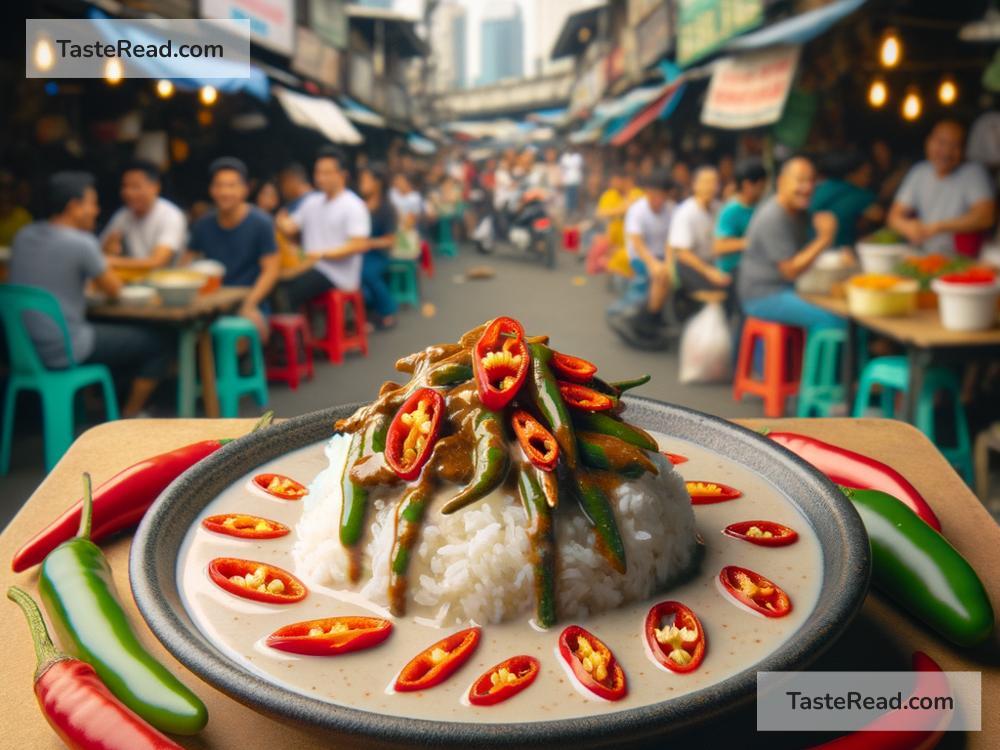Exploring the Spicy and Sweet Blend of Filipino Bicol Express in Manila, Philippines
If you’re visiting Manila, Philippines, you’ll discover a city full of vibrant culture, warm smiles, and delicious food. Among the many Filipino dishes to try, one stands out for its bold flavors and unforgettable taste: Bicol Express. This dish is spicy, creamy, and brings together sweet and savory flavors in a way that will excite your taste buds.
Bicol Express is originally from the Bicol region in southern Luzon. The Bicol region is known for its use of chili peppers and coconut milk in cooking, and Bicol Express reflects these key ingredients. Over time, this flavorful dish has found its way to the tables of homes and restaurants across the country, including Manila, where locals and visitors alike enjoy it.
So, what makes Bicol Express special? Let’s dive into its history, ingredients, and where to find the best version of this dish in Manila.
The Story Behind Bicol Express
Interestingly, Bicol Express didn’t originate in the Bicol region entirely. It is said to have been created in Manila by a famous Filipino chef named Cora P. David in the 1960s. The dish was inspired by the traditional Bicolano dish called gulay na lada, which features the same spicy and creamy elements. Cora David called her dish “Bicol Express” after the train route that connects Manila to the Bicol region, as a way to showcase the flavors of this southern Filipino area.
What makes Bicol Express even more fascinating is how it reflects the Filipino love for blending flavors and textures. It’s the perfect example of using simple ingredients to create something extraordinary!
What’s in Bicol Express?
At its heart, Bicol Express is a dish made with pork, coconut milk, chili peppers, garlic, onion, shrimp paste (known as bagoong), and seasonings. Some cooks add their own twists, like adding vegetables, tofu, or using beef or chicken as a substitute for pork. The balance between the creamy coconut milk and the fiery chili peppers creates a flavor combination that feels exciting and comforting at the same time.
Here’s how the dish usually comes together:
- Sautéed Base: Garlic, onion, and ginger are sautéed to make a flavorful foundation.
- Main Meat: Pork belly or pork shoulder is traditionally used, cut into small pieces and cooked until tender.
- Coconut Milk: Fresh or canned coconut milk is added for creaminess, giving the dish its rich and velvety texture.
- Chili Peppers: Chili peppers bring the heat to Bicol Express. Some chefs tone down the spice level while others keep it fiery for those who like an extra kick.
- Shrimp Paste: Bagoong adds saltiness and depth, tying all the flavors together.
- Seasoning: The dish is completed with salt, pepper, and sometimes sugar to balance it all out.
The result? A mouthwatering stew that is best enjoyed over a plate of steaming white rice!
Bicol Express in Manila
Eating Bicol Express in Manila is a great way to experience the flavors of the Philippines without leaving the city. Many local restaurants serve their own version, each with slightly unique twists, so you can try it in different styles.
Here are a few places where you can taste delicious Bicol Express in Manila:
-
Local Carinderias (Small Eateries): One of the best ways to enjoy Bicol Express is to try the homemade versions served in small carinderias across Manila. These humble eateries serve traditional Filipino food at affordable prices, and their Bicol Express feels comforting and authentic.
-
Filipino Restaurants: Popular Filipino restaurants in Manila, like Mesa, Manam, or Kanin Club, often serve Bicol Express with a modern twist. Some places make it less spicy for guests who prefer mild flavors, while others keep the authentic heat.
-
Food Parks and Street Food Stalls: Manila has a growing food park scene where young chefs and cooks experiment with Filipino dishes. You might find Bicol Express served with rice bowls, other regional dishes, or even creative takes like Bicol Express pizza or pasta!
-
Home-Cooked Meals: If you have Filipino friends, don’t be surprised if they invite you to their home for a meal and serve homemade Bicol Express. Many families have their own recipe for this dish, making it even more special.
Tips for Enjoying Bicol Express
If you’re new to spicy food, you might want to start with a milder version of Bicol Express. Let your server know, and they can recommend one that’s not too hot. And of course, don’t forget to pair it with rice—it helps balance the heat and makes the dish even more satisfying.
For spice lovers, Manila is the perfect place to experiment with different levels of spiciness. Some versions come with extra chili on the side, so you can customize your meal to your liking. A refreshing drink, like a cold calamansi juice or coconut water, can also help keep you cool after each spicy bite.
Why You Should Try Bicol Express in Manila
Exploring food is a big part of experiencing Filipino culture, and Bicol Express captures the spirit of Filipino cooking—a beautiful mix of local ingredients, bold flavors, and traditions. Whether you’re dining at a fancy restaurant or enjoying the dish at a roadside carinderia, each bite tells a story of the Philippines.
Next time you’re in Manila, don’t miss the chance to taste Bicol Express. It’s a dish that will leave you with happy memories, a full stomach, and a new appreciation for Filipino cooking.
So grab a plate, dig in, and let the spicy and sweet symphony of Bicol Express take you on a flavorful journey!


